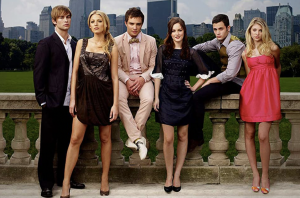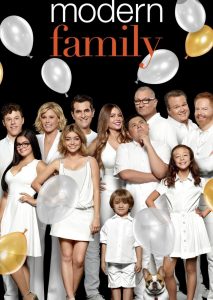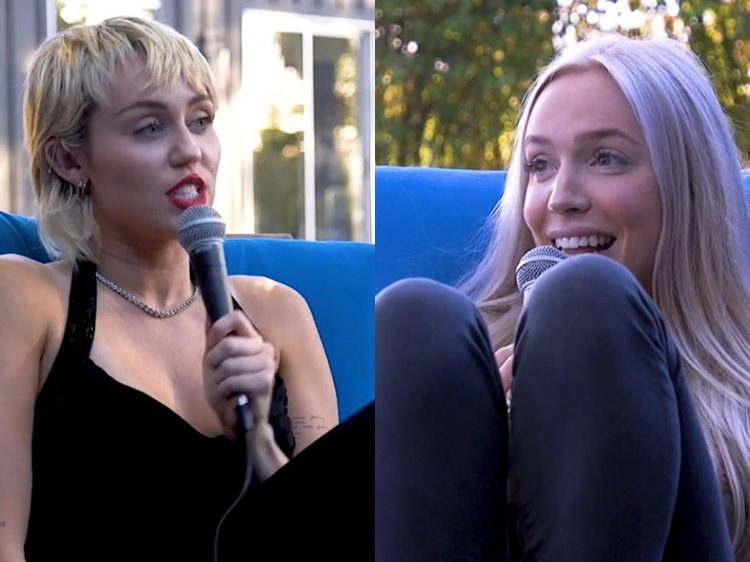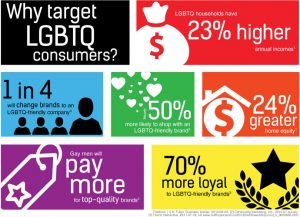In this keyword, queer media is mentioned frequently, particularly how it can often be connected to financial gain. The “impact” of queer media is mentioned, especially “in ways that equate profit and advertiser approval with political progress.” Using this capitalistic lens to examine the production and consumption of queer media, we begin to question whether the intention is genuine on both sides of this media experience. When it comes to production, we then wonder about the intention behind producing “queer” media. Is this production designed to be an accurate representation of the queer experience? Or does it exist to appeal to an audience that seeks such representation, or perhaps a watered-down version of it? The example that comes to mind here is a music video that recently faced backlash and criticism for “queerbaiting”, Billie Eilish’s music video for her song “Lost Cause.” In the video, Billie is seen dancing and having fun with a group of girls, but the video seems to be sexualized, leading viewers to question both the singer’s sexuality and whether or not she was using queerness as a way to market herself and her music. Consumers of media have a role in inspecting examples such as this and encouraging the creation of queer media that represents a wider range of the queer experience, rather than solely a glamorized version.
Queer – Chloe Fandetti
Queer media challenges gender norms and heterosexual relationship stereotypes through the representation of the LGBTQ+ community. We can see the progression of queer acceptance in society in relation to queer representation in the media. In recent years, queer media has become more prevelent, with movies, tv, music, and podcasts including more LGBTQ+ characters/ideas and using more queer methods of storytelling. I think for a lot of people it’s important to see representation of someone like yourself in the media because it helps to find your identity and feel accepted. For example, in the coming of age film Love, Simon, the main character is a closeted high school student who struggles with his sexuality and fears coming out to his friends and family. Exploring the complexities that come with identity, sexuality, and coming out, this film is important for queer individuals to see themselves positively represented on the movie screen. Released in 2018, Love, Simon was the first film with a gay protagonist to be backed by a major film studio. There was a hugely positive reaction to the film, inspiring many individuals to come out and even share their experiences on social media. Below, I included some tweets of people sharing their experiences after watching the film. Queer representation in media is so important because media has such an infleuential role on our cultures and identities.




Tweets from 2018 after Love Simon was released
Queer- Chloe Whelan
Queer, although multifaceted in its definition, is primarily used in the LGBTQ+ community as an umbrella term for those whose sexual and gender identities are not cisgender or heterosexual. Queer media, which promotes the fluid nature of queerness, has become increasingly more prominent on various platforms such as television, streaming services, film, and social media. Promoting queer culture through various media platforms has allowed for numerous people with underrepresented identities to express themselves confidently and challenge traditional cultural/societal norms. The rise of queer media is especially apparent through several pre-existing and recent shows on streaming platforms such as Netflix, Hulu, Amazon, and HBO Max. An example of queer media that I’ve enjoyed is HBO Max’s reboot of the show Gossip Girl (2007). Although the original show’s characters were almost exclusively white and heterosexual, the 2021 reboot has challenged this completely. Firstly, the style of the characters is incredibly bold. As a review of the show on the website Queer Queue states about the protagonist, “…Alexander’s Julien is a revelation of a character. The fluid style that feels truly inspired by herself is a breath of fresh air from all of the stuffy couture we’re used to. There’s a queerness to her style…” Her style is bold and edgy, and her work as a social media influencer showcases how the lifestyle and perception of New York City’s elite has changed immensely since the original show aired. Another example of the show’s fostering of queer culture, is the inclusion of a pansexual character, Max Wolfe. Chuck Bass, a character from the 2007 cast, was well known as a womaniser. Although the reboot’s character’s aren’t meant to be the same (more so reflections of characters from the original show) the new “Chuck Bass” character named “Max Wolfe” shows interest in men, women, and gender fluid partners. Although he possesses the same “drive” as the original Chuck Bass, he has his sights set on a much greater variety of people than just the heterosexual women of New York City’s elite. Critics of queer media applaud the fluidity and “queerness” of the show, acknowledging the value in the realism of the diversity in race, sexual orientation, and gender of the characters.
Original Cast (2007)

Reboot Cast (2021)

Queer Queue article:
https://thequeerqueue.com/hbo-maxs-gossip-girl-reboot-hot-take/
Queer Keyword- Thomas Takele
I believe that representation is important because if you do not see people like you then it is hard to find comfort in media. I believe this is important in queer media because when people are not represented it is harder for LGBTQ+ to identify with themselves and feel like they are not outcasts or outside of the norm.
/cdn.vox-cdn.com/uploads/chorus_image/image/64912827/AlisonOnEuphoriaS1_HBO_Getty_Ringer.0.jpg)
This representation can be seen in more progressive shows where this representation is shown such as the show Euphoria. In this show the two main characters are two girls who are love interests. This type of representation on television no matter the content of the story shows that the stories of queer people are seen. One of the girls who is a transgender girl and her representation in the story is also important because it shows the stories of people who are not usually represented in media especially in television and movies.
Queer – Grace Brogan
The text mostly focused on queer media in regards to visual media such as television, but queer representation in media is also important in music. One musical artist that I believe connects well to the concept of queer media, as well as to the concept of identity, is Girl In Red. Girl in red is a Norwegian singer song writer who has become pretty popular in the past few years. Some of her most popular songs are about queer romance. One of the reasons I wanted to talk about her music in particular is because of the fact that listening to her is seen as a marker of queer identity or at least lesbian identity to some. As fully explained in the article linked below asking someone if they listened to girl in red became a sort of short hand or way to semi covertly ask someone about their identity. People who didn’t listen to the artist or maybe did not identify as queer would not necessarily get the reference, but those who did would. Not only was girl in red a new artist working to create media for other queer people, but she became a part of greater queer culture and identity. I have also included a link to an interview with the artist where she is asked about being a “queer icon” and a link to one of her songs.
note: girl in red is not capitalized when used as her stage name, but I capitalized it in a few places to make the sentence a little more readable
“Do you listen to girl in red?” article: https://www.them.us/story/girl-in-red-tiktok-gen-z-sexuality-identity
Girl in Red interview: https://www.papermag.com/girl-in-red-2639222000.html?rebelltitem=16#rebelltitem16
Queer-Zoey Zeng
Queer is like people whose sexual orientation does not conform to the prevailing culture and dominant gender or sexual norms, which also shows the diversity of society. Queer media is like a platform for people to know about this minority group of people or a way to know about themselves. In recent years, we see the progress of queer media through television, movies, and fiction. However, queer media still has a long way to go. For many countries like China, many people still have a bias toward the LGBTQ+ community. Last year, a TV series called The Untamed adapted from gay fiction that became very popular in China. However, in order to get the show approved by the TV station, they changed the lovers’ relationship of two leading actors into the relationship of friends and deleted episodes of them, and add episodes of a female supporting role. Since the show went viral, this kind of “queer media” has become more and more in China, which directors use implications to show about LGBTQ+ group. What I hope is one day queer media can accept by both politics and the public correctly . There is no right or wrong to different gender identities and I think it’s an important element to construct the society.
Mimi Bainbridge “Queer” Post
In recent times, queer media has continuously challenged traditional gender and relationship “norms” by giving more opportunities to underrepresented identities. This typically includes the LGBTQ+ community. Throughout the years, I have begun to see an increase in the amount of characters featured on shows that are either gay or exploring any another identity. For example, the hit sitcom Modern Family follows the lives of three different families that are all connected by some relation. Two of the main featured characters are a gay couple named Mitch and Cam. Mitch and Cam are lovable and hilarious. Moreover, they also provide glimpses of what their lives were like during their younger years and detail their experiences with coming out. I feel that these characters could be viewed as prominent role models and can help people of any age that are struggling with coming to terms with their identity. They serve as an example that it is possible to make it out of the hardships they faced.

Here is a picture of the Modern Family cast!
Queer-Benjamin Cudmore
Queer is a way to describe a person’s identity for those who move away from normative conventions. The LGBTQ+ community is mostly associated with the word queer and the media surrounding it. Queer media is produced to promote queer culture and make it available on a platform. Examples of this can vary from social media, television programs like Bravo, or streaming services like Netflix, Hulu, or Amazon who are starting to cater more strongly towards queer media. When people consume media queerly, they are examining media through a queer lens. The consumer could identify with the LGBTQ+ community or just be interpreting the media as having queer attributes. Looking through this lens can occur whether picking out clothes, connecting to song lyrics, watching TV shows that break apart from societal norms, or other forms of expressing one’s identity.
Queer- Bella Kjellen
In new media today, film and tv have done an excellent job presenting through the queer-lens, ultimately increasing exposure of the queer lifestyle to our society. For example, I movie “Love Simon” which was based on the book “Simon vs. The Homo Sapiens Agenda” by Becky Albertalli, depicted the story of a boy, Simon, who is a closeted teen being blackmailed for his sexuality. Not only does the film include new media such as app platforms (Instagram and Twitter), current music (at the time of its production), slang, clothing, and more, but includes the queer-lens as the main POV amongst the ever-changing, fast pace, aspects of everyday life. While one does not need to identify as queer themselves, I feel that this film and book did a great job fostering empathy, understanding, and commonality through Simon’s story and “life”. This movie got two Teen Choice Awards, hence its influence on youth in our society.
Additionally, beyond film, I have also encountered new expressions of Queer through media influencers from Youtube, Podcasts, and famous artists. One example of this was through the top charts podcast “Call Her Daddy”. This lifestyle podcast hosted by Alexandra Cooper features celebrity guests to co-host episodes weekly. One episode guest-starred Miley Cyrus. Miley Cyrus, who is commonly known to once be “Hannah Montana”, has now extremely shifted her look and influence as a much more open person. On the show, she notes her sexuality as being someone open to anything. She says, “I love people, I love who I love”. Miley Cyrus had a heavy influence on many people in their youth as the peppy blonde pop superstar she played on the show, and the inclusion, especially presented through her actual voice, helps push toward the “Queer OS” that Tongson mentions in the chapter. Exposure to queer perspectives and lenses, especially through society’s biggest influencers, will encourage others to explore, understand, further accept, and appreciate the queer media.
 .
. 
Keyword #4: Queer
The word “queer” is by definition a representation of anti-normative content. Queer media serves to provide an advocacy-focused lense through which underrepresented identities can see themselves realized on the screen particularly in the LGTBQIA+ community. Animation, for example, is just one medium that has come a long way. Historically, whether it was the animators depiction or the audience’s perception of “queerness”, queer-coded or stereotypical characters were widely accepted as the butt of comedy. In 2018, Cartoon Network’s “Steven Universe” made history showing the first cartoon gay kissing scene. This was done with the intention of normalizing gay relationships particularly in the minds of youth. Many popular TV shows have followed suit not solely producing “gay characters” but ultimately characters who are gay. This allows characters to be more complex than their sexual orientation and demonstrates that identities are multi-faceted. However, progress has not come without challenges. Author Jake Pitre for the Columbia Journal Review suggests that queerness in the media is largely dependent on how profitable the content is. In January of 2019, Grindr laid off their entire editorial and social media staff (Pitre, 2019). Further, BuzzFeed announced mass layoffs, including many that covered LGBTQIA+ stories (Pitre, 2019). This growing concept of queer capitalism and companies profiting off of major events such as Pride month speaks to the conditional nature of LGBTQIA+ support from the media.
Pitre, J. (2019, March 19). Surviving the boom and bust of queer media. Columbia Journalism Review. Retrieved September 15, 2021, from https://www.cjr.org/first_person/queer-media.php.

Duke, A. (2015). “Why Sell to Lgbt Shoppers?”. Feeling ambivalent about Queen City Pride. photograph, BriarPatch Magazine. Retrieved September 14, 2021, from https://briarpatchmagazine.com/articles/view/feeling-ambivalent-about-queen-city-pride.
